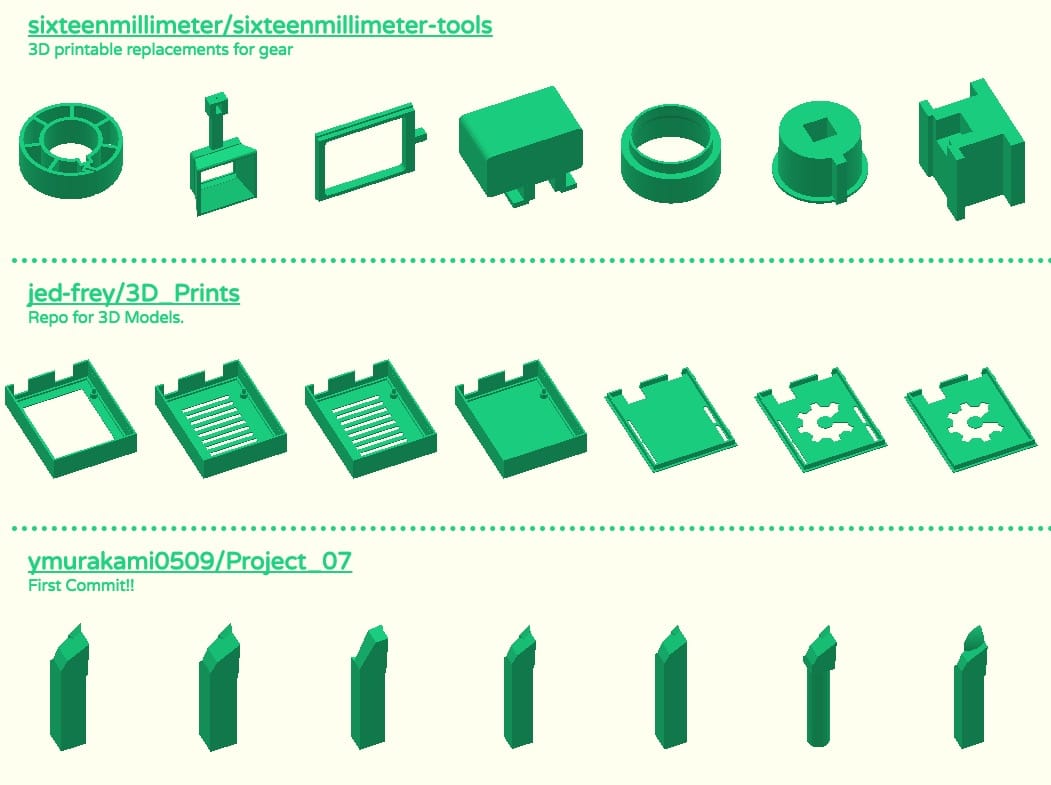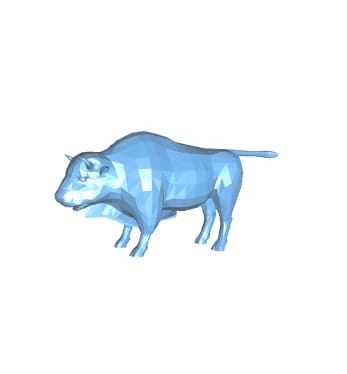
A new project can keep you up to date on the latest publicly available 3D models.
STL.garden is a product of Florida-based coding whiz Matthew Rayfield, who seems to be quite prolific in his ability to knock off unusual useful small utility systems. Among the 16 items available at his GitHub page are systems for music synthesis, octoprint plugin, image processing, processor emulation and gaming.
You’ll notice the Octoprint plugin, suggesting Rayfield has an interest in 3D printing, and that is certainly the case. Now he’s launched an unusual app that helps you find 3D models, many of which might never be found using other means.
The tool is called “STL.garden”, and it is essentially a running feed of new 3D models as found on GitHub.
Wait, what’s GitHub? It’s a publicly accessible implementation of “git”, a very popular open source source code control system. Essentially it’s for creating manageable repositories of code for a project. In other words, you can find the code for many projects there.
GitHub offers two styles of storage plans: paid, which provide a private space where their clients can keep their secret projects; and a free plan, which provides the same storage mechanisms, but the material is publicly viewable. Because of this, many open source projects use GitHub as their prime repository because their code is supposed to be visible anyway.
But here’s the catch: GitHub users can store ANY type of digital material, as long as it’s a file. That includes 3D models, stored in STL form, for example. GitHub recently announced support for 3D files, encouraging clients to upload their 3D material.
What Rayfield has done is to develop a system to monitor and collect information on the most recently posted STL files to GitHub. It’s a stream of STL files that never ends!
STL.garden does not provide a lot of info about the STL files, but simply shows you a thumbnail 3D preview image of the file. This is in many cases sufficient to identify the object, at least by eye. I should note that many objects are not particularly useful, except to whomever created them.
You can click on the image and it will take you directly to the GitHub file for that 3D model. You can even download it if you like, as I did here to obtain a copy of GitHub user martimyc’s bull 3D model.

Another thing to note is that these represent changes to the 3D models; anytime a new version is uploaded, it appears in the STL.garden stream. This means you may be seeing incomplete or in-progress versions. You should check the owner’s page to understand the status of any particular 3D model.
Why I find this interesting is that it opens up the possibility of encountering 3D models not frequently seen in other repositories. Yes, there are some meta-search facilities like Yeggi or Yobi3D that do inspect other 3D model repos and create a meta-list, but not all of them look at GitHub.
One suggestion I’d have for STL.garden is to add a RSS feed, which would allow someone to subscribe to the feed and see a stream of new 3D models in a RSS reader.
But for now, it’s visual, and you’ll be scrolling. A lot.
Via STL.garden and Matthew Rayfield

